“There is no path forward toward reduction of carbon emissions that does not include limiting energy consumption and economic growth.”
Art Berman in The Impossible Dream of Emissions Reduction
![]() Just wait until SARSCoV2 cumulatively with frac chemicals (gas fracs still require chemical additives) and benzene contamination (in fuel used by all those frac trucks, no mater what fluid they use to frac) is done wrecking human sperm:
Just wait until SARSCoV2 cumulatively with frac chemicals (gas fracs still require chemical additives) and benzene contamination (in fuel used by all those frac trucks, no mater what fluid they use to frac) is done wrecking human sperm:![]()
Deirdre Des Jardins@flowinguphill:
Not just climate change and the pandemic. There’s been a worldwide decline in male fertility (51.6% decline in sperm count in North America, Europe, & Australia between 1973 and 2018, with the decline per year doubling since 2000.)
Sperm counts may be declining globally, review finds, adding to debate over male fertility
***
Dr. Sandra Steingraber @ssteingraber1 Dec 21, 2023:
Yesterday 90 leading health and environmental organizations across the state sent a letter in opposition to this plan to @GovKathyHochul. Including Concerned Health Professionals of NY.
Short version: Texas, do not mess with New York.
Shorter version: NO
Longer version:
SEHN@SEHNetwork:
“The plan, [@ssteingraber] believes, would represent a ‘massive industrialization of the New York landscape…’” w/ impacts including soil erosion, air pollution, light pollution and potential contamination of drinking water aquifers. #StopCO2Fracking #CCS
New York’s latest fracking proposal promises cleaner method. How experts rated it by Riccardo Monico, Binghamton Press & Sun Bulletin, Dec 21, 2023, Press Connects
In the years since New York became the first shale-bearing state to ban fracking in 2014, the decision continues to divide communities across the state.
In the Southern Tier, companies and landowners have proposed alternative extraction methods skirting the state’s ban while environmental activists have called for even more restriction.
Now environmental groups across the Southern Tier are calling for an expansion of New York’s fracking ban in light of the latest proposal by Southern Tier CO2 to Clean Energy Solutions (Southern Tier Solutions) to extract gas from the state’s Marcellus and Utica shales using carbon dioxide, a process the company claims would neutralize carbon emissions.![]() Claims from Hell.
Claims from Hell.![]()
Tuesday afternoon, multiple groups including Frack Action, Sierra Club, Citizen Action New York, Food & Water Watch and Science and Environmental Health Network assembled for a virtual press conference, renewing their push for an expansion of New York’s drilling and fracking legislation.
Their campaign comes on the heels of other public responses including a rally held Dec. 12 in downtown Binghamton, a November inquiry launched by local lawmakers and a letter from the DEC, as Southern Tier voices debate the next chapter in the region’s fracking story.
What is Southern Tier Solutions proposing?
On a sunny winter day outside City Hall in Downtown Binghamton, a man who helped prevent shale fracking in New York over 10 years ago announces the fight is back on.
Walter Hang is the president of Toxics Targeting, an environmental database firm which gathers data on potentially toxic sites in New York. At a rally Dec. 12, Hang called for New York Gov. Kathy Hochul to prohibit all forms of high-volume hydraulic fracturing and drilling in the state.The appeal came in response to reports that local residents with more than 30 acres of land in Broome, Tioga and Chemung counties were being contacted by Southern Tier Solutions with proposals to lease their land for a gas drilling operation.
Bryce Phillips, president of Southern Tier Solutions, said his company offers an innovative way to create energy while also disposing of carbon dioxide.![]() Innovative my ass. Frac is frac, doesn’t matter what fluid (C02, water, N2, H2S, foamed N2, diesel, waste oil, etc) is injected, the risks, damages and harms are the same. Industry and its enabling regulators know damned well fluids injected to frac or store carbon, do not stay put.
Innovative my ass. Frac is frac, doesn’t matter what fluid (C02, water, N2, H2S, foamed N2, diesel, waste oil, etc) is injected, the risks, damages and harms are the same. Industry and its enabling regulators know damned well fluids injected to frac or store carbon, do not stay put.![]()
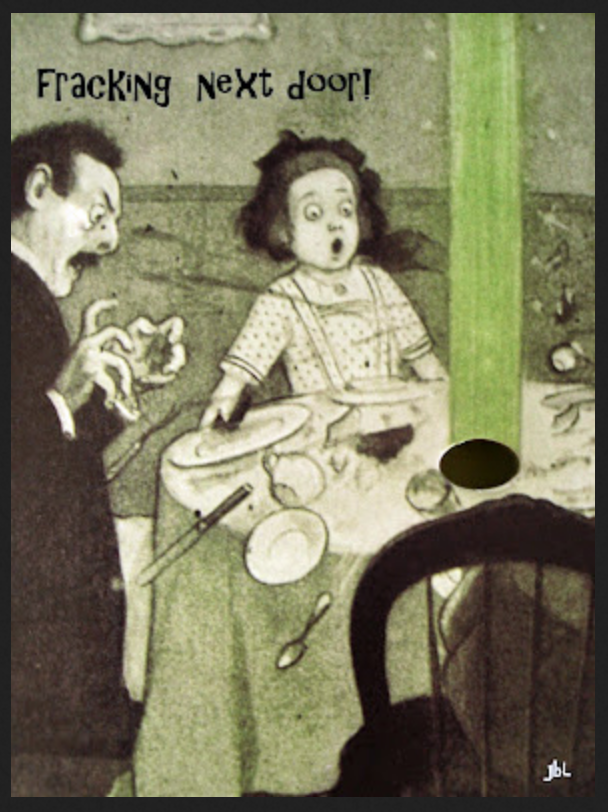
“The premise is to develop the shale gas resources of the Southern Tier, while simultaneously converting that to carbon-free power, aka electricity, while also sequestering carbon dioxide,” he said. “The carbon dioxide is a byproduct of the electrical generation process. It, as well as noxious gases, are captured at that time. Basically nothing is released into the atmosphere.”

![]() Endless leaks and intentional venting occur across all parts of the polluting frac process, no matter what fluid is used to frac
Endless leaks and intentional venting occur across all parts of the polluting frac process, no matter what fluid is used to frac![]()
According to Phillips, the process revolves around extracting methane gas stored in shales in the Southern Tier.
“Right now, the Marcellus shale has pores filled with methane,” said Phillips. “We can’t put any carbon dioxide in those pores, because they are already full. You must remove the methane from the shale, and in return replace it with carbon dioxide. The shale actually prefers to absorb carbon dioxide, which causes it to release more methane. All we are doing is swapping one commodity for another.”![]() Just more sleazy word fuckery by unscrupulous frac’ers
Just more sleazy word fuckery by unscrupulous frac’ers![]()
Because the company will use the CO2 created during their process, as well as significantly more CO2 from other sources, Phillips said the project would result in “net-negative” carbon emissions.![]() Wow! Magic by frac, yet again. “Net zero” is impossible, and industry knows it, so imagine how impossible “net negative” is! Frac’ers never know when to quit their fairy tales. How would the company ship that significant CO2 from elsewhere? Fairy dust? Pipelines leak, CO2 pipelines are deadly!
Wow! Magic by frac, yet again. “Net zero” is impossible, and industry knows it, so imagine how impossible “net negative” is! Frac’ers never know when to quit their fairy tales. How would the company ship that significant CO2 from elsewhere? Fairy dust? Pipelines leak, CO2 pipelines are deadly!![]()
CO2 has been used similarly in Canada and China before, Phillips said, due to a lack of access to water, and he argued implementing similar strategies could result in billions of dollars for Southern Tier landowners.![]() Ah ha! Here comes the bribery talk!
Ah ha! Here comes the bribery talk!![]()
Questions emerge over Southern Tier fracking proposal
In November, Assemblywoman Donna Lupardo and State Senator Lea Webb said local landowners had reached out to their offices, asking if the lease requests they’d been sent by Southern Tier Solutions were part of a scam. Lupardo and Webb turned to the Department of Environmental Conservation with questions — What is the science involved in this method of natural gas extraction, they asked, and what are the potential environmental impacts?
But in a Dec. 8 letter, Commissioner Basil Seggos said the DEC had not been contacted by Southern Tier Solutions at all. Phillips said Monday while Southern Tier Solutions has been in contact with the U.S. Environmental Protection Agency, they reached out to the DEC and did not receive a response.![]() I don’t believe Phillips.
I don’t believe Phillips.![]()
If a proposal was made, Seggos said, “DEC’s permitting reviews would examine all applicable federal and state standards to ensure the agency’s decision is protective of public health and the environment, upholds environmental justice and fairness, and meets applicable standards, including those related to the Climate Leadership and Community Protection Act (Climate Act) and the State Environmental Quality Review Act.”
Phillips said the company is happy to work alongside government agencies to ensure their proposal is in line with guidelines and rules. ![]() Translation: We’ll give them so many happy bribes and happier bottles of good booze, they’ll bend over quick to give us what we demand.
Translation: We’ll give them so many happy bribes and happier bottles of good booze, they’ll bend over quick to give us what we demand.![]() Their method of extraction
Their method of extraction differs from ![]() Is the same as
Is the same as![]() the high-volume hydraulic fracturing explicitly banned in New York — the regulations pertain to fracking that uses more than 300,000 gallons of water.
the high-volume hydraulic fracturing explicitly banned in New York — the regulations pertain to fracking that uses more than 300,000 gallons of water.![]() just using high volume gas (Co2) injected to frac, rather than water. A frac is a frac but gas fracs can be much more dangerous than water fracs.
just using high volume gas (Co2) injected to frac, rather than water. A frac is a frac but gas fracs can be much more dangerous than water fracs.
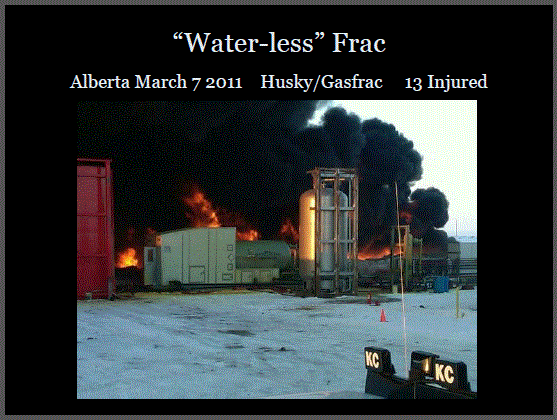
Captured CO2 being clean and safe is a scam, pimped globally as the oil and gas industry’s answer to everything by polluters and their enablers like Alberta Premier Danielle Smith![]()
Environmental experts point to drilling risks
But according to Hang, Southern Tier Solutions’ proposal exploits a loophole that is “completely inadequate” and overlooks hazards presented by non-water fracking methods.
Anthony Ingraffea, Dwight C. Baum Professor of Engineering Emeritus at Cornell University, studies complex fracturing and natural gas development. Ingraffea was named a Fellow of the International Congress on Fracture in 2009, has worked with a variety of agencies including NASA and the U.S Department of Transportation and has given over 150 talks regarding shale gas development in New York.
The most harmful effects of fracking, he’s told audiences, were caused by what happened before and after fracking, not the fracking itself.
Southern Tier Solutions’ proposal, he said, would generate the same negative results.
“What was being proposed in New York was high volume hydraulic stimulation. What is being proposed by Southern Tier Solutions is a untried, innovative, novel form of stimulation using supercritical CO2 to stimulate the production of methane — irrelevant,” Ingraffea said. “What is relevant is everything they have to do before that act of stimulation, and everything they have to do after that act of stimulation which becomes potential sources of human health and environmental impact. Therefore, the risks are all the same.”
Ingraffea outlined a long list of potential negative impacts from Southern Tier Solutions’ proposal, from the destruction of trees, roads and farmland to water contamination and emissions from the drilling process.
That’s where the problem begins, said Sandra Steingraber, a senior scientist with the nonprofit Science and Environmental Health Network who has studied the effects of chemical contamination on humans. The negative impacts of fracking don’t disappear when CO2 is swapped in for pressurized water, she said.
“In fact, more problems are added. Those problems start with the act of drilling.”
Steingraber said research by Concerned Health Professionals of New York indicates potential problems caused by using CO2 could be even worse than with water-based fracking and not enough research has been done to determine the level of emissions that would result from Southern Tier Solutions’ proposed method.
The plan, she believes, would represent a “massive industrialization of the New York landscape,” and among its impacts would be soil erosion, air pollution, light pollution and “turning the shale layer below our feet into a pincushion and thereby opening potential pathways of contamination between the shale and the drinking water aquifers that lie above.”
Phillips maintains Southern Tier Solutions’ plan offers an innovative solution which could provide power to homes and businesses around the state and meet the high-power demands of the emerging tech industry in New York.![]() More hooks of bla bla bla. Emerging tech? Like the super stupid greed-feeding super polluting bitcoin that’s bankrupting so many people, and putting CEOs in prison for fraud, theft, etc.?
More hooks of bla bla bla. Emerging tech? Like the super stupid greed-feeding super polluting bitcoin that’s bankrupting so many people, and putting CEOs in prison for fraud, theft, etc.?![]()
Meanwhile, environmental activists push forward, calling for New York to expand its fracking ban and prohibit the project from gaining traction in the Southern Tier.
“Once the fracking begins,” Hang said, “you can’t put the genie back in the bottle.”
Dr. Sandra Steingraber @ssteingraber1:
My quotes on plans to frack NYS with CO2 are not muted.
—CO2 is a leaky toxic asphyxiant
—CO2 fracking is linked to earthquakes
—Hell no
“Fracking with carbon dioxide is a crazy idea,” said environmental activist Sandra Steingraber, a founder of Concerned Heath Professionals of New York.
“It’s an end run around our laws in New York.”
Good reporting by @PMantius
Barbara W Brandom@BarbaraWBrandom:
I wish that Pennsylvania could follow its neighbors, Maryland & New York, and restrict fracking. No more gov $$ for FFuels.
Alex Beauchamp@AlexAtFWW:
Fracking is dangerous, so [New York State] banned it.
But! Fracking with CO2?
Still crazy dangerous, and we should ban it @GovKathyHochul
By the way, if this attack on our #fracking ban upsets you, you can tell @GovKathyHochul
to reject this crazy idea here:
New York’s Fracking Ban Under Attack! by Food and Water Watch
It’s been almost a decade since we won a ban on fracking in New York. But now a newly formed company from Texas is seeking to drill thousands of new wells, using carbon dioxide (CO2) instead of water to get around our ban.
We can’t let this dangerous plan go forward. It’s no surprise that the oil and gas industry is willing to risk the health and safety of our communities to extract natural gas from New York, but we can and will defeat them again.
Take action now to demand Governor Hochul stop this reckless “CO2 fracking” plan in its tracks.
Better Path Coalition@BetterPathPA:
Wow, NYS has 23k unplugged wells? And that’s surely nowhere near the real number. Fracking w/ CO2 is nuts under any circumstances, but putting a CO2 well near an unplugged well is a recipe for disaster. https://dec.ny.gov/energy/1551.ht
Dave Peterson (He/Him) @FedUpWithBadAir:
I wish they would ban it here in #BritishColumbia too. It is wreaking absolute havoc on the First Nations in the northeast of this province.![]() It’s wrecking absolute havoc on everyone in NEBC, non First Nations, and workers, fish, wildlife, birds too.
It’s wrecking absolute havoc on everyone in NEBC, non First Nations, and workers, fish, wildlife, birds too.![]()
Mid-Ohio Valley Climate Action@MidClimate:
Carbon Capture & Storage is not just unproven but disproven at anywhere near the scale necessary and is incredibly dangerous. See http://carboncapturefacts.org for more info, .@ssteingraber1
Dr. Sandra Steingraber @ssteingraber1:
Exactly the conclusion @SEHNetwork has reached and exactly the correct message.
Plan for Gas Drilling Spree in Southern Tier Draws Muted Response from DEC, State Reps; But Green Groups Outraged by Peter Mantius, , Water Front
BINGHAMTON, Nov. 17, 2023 — An ambitious plan to turn three Southern Tier counties into a vast energy hub pockmarked with thousands of new natural gas wells has drawn a muted response from state regulators and the state legislators who represent the districts.
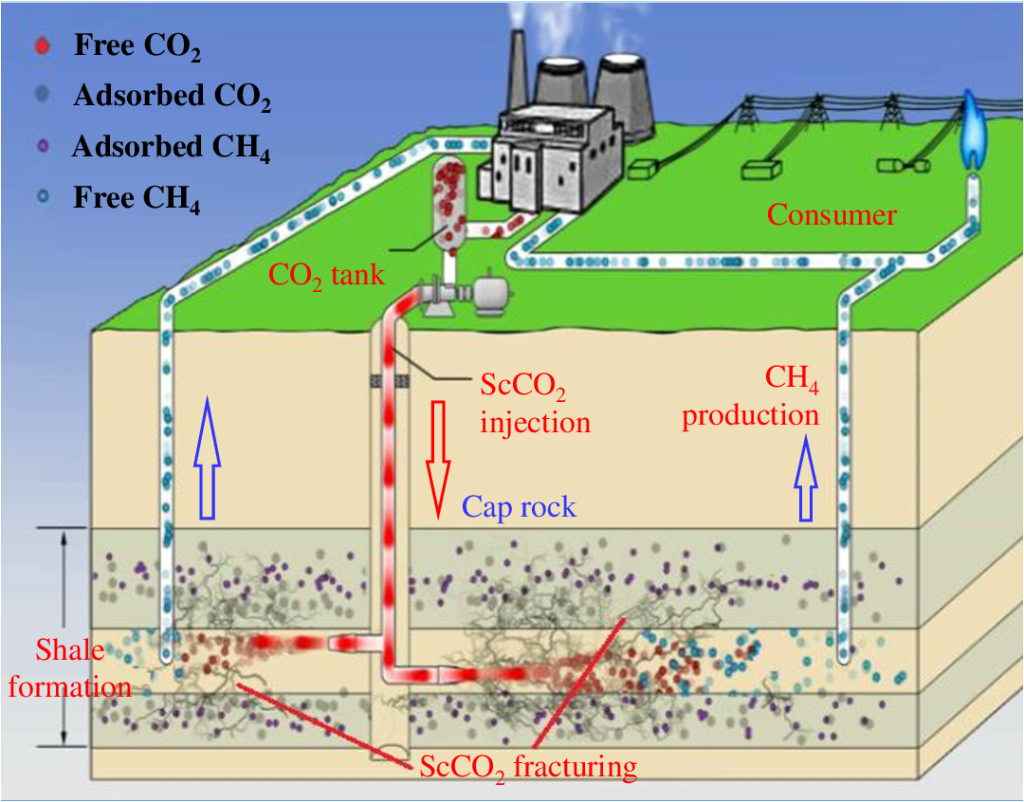
Sixty-five hundred residents in Broome, Tioga and Chemung counties have received packages in the mail encouraging them to sign leases with a new company with Texas roots.
Southern Tier CO2 to Clean Energy Solutions LLC![]() Even the company name is a con job
Even the company name is a con job![]() — often shortened to Southern Tier Solutions, or STS — intends to drill wells on their land to extract methane and store carbon dioxide (CO2).
— often shortened to Southern Tier Solutions, or STS — intends to drill wells on their land to extract methane and store carbon dioxide (CO2).
The plan also calls for the construction of up to a dozen new natural gas-fueled power plants and several direct air capture facilities that pull CO2 out of the atmosphere, according to the STS website. The wells, power stations and DAC plants would be linked by a series of new methane and CO2 pipelines.
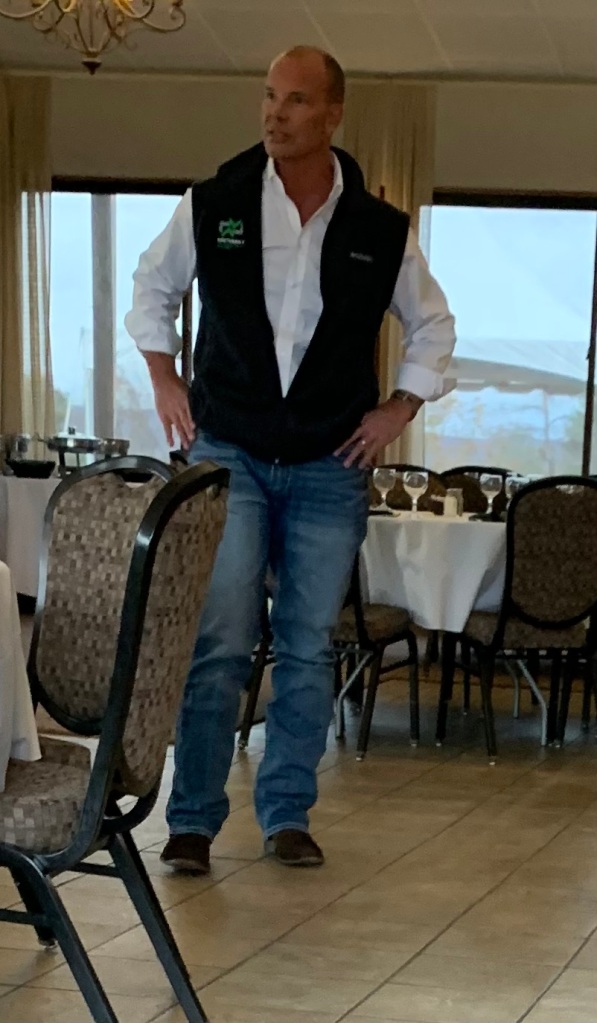
Bryce Phillips, president of STS, told WaterFront the company would only proceed if it can obtain signed leases for at least 100,000 acres by early March.
The project would also require the company to win state permits for a process that is relatively untested: injecting fluid CO2 instead of water to extract methane from the Marcellus and Utica shale formations.
New York State bans hydraulic fracturing, or fracking, when it requires more than 300,000 gallons of water per well. Fracking with C02 is a new regulatory issue that the state Department of Environmental Conservation would need to examine and eventually permit. Also, the state’s 2019 climate law requires a gradual reduction in greenhouse gas emissions from natural gas sources.
But STS has not yet applied to the DEC for any permits.
The agency said in a statement to WaterFront that it “does not have sufficient information about this conceptual project … to speculate about the potential state permits or authorizations that would be required … DEC has not participated in any pre-application meetings nor received permit applications (from STS).”
Meanwhile, the state legislators who represent the districts targeted for development aren’t talking.
Sen. Tom O’Mara (R-Big Flats), whose Senate district includes Chemung and Tioga counties, did not return telephone calls or respond to emailed questions about the STS project. Neither did Assembly Member Chris Friend (R-Horseheads), whose district includes all of Tioga County and large sections of Chemung and Broome.
Sen. Lea Webb (D-Binghamton), whose district includes most of the eastern portions of Broome County, told WaterFront through a spokesperson that she is “aware of the (STS) issue and investigating its potential impact on her district and our climate laws here in NY.”
O’Mara, an attorney with the law firm Barclay Damon, and Friend, who holds a PhD in chemistry, opposed the state’s ban on high-volume hydrofracking, and they did not support the state’s landmark climate law, the Climate Leadership and Community Protection Act, or CLCPA. Webb was first elected in 2022 and did not vote on either measure.
Several environmental groups expressed alarm about the project STS proposes.
“Fracking with carbon dioxide is a crazy idea,” said environmental activist Sandra Steingraber, a founder of Concerned Heath Professionals of New York. “It’s an end run around our laws in New York … that adds new hazards to a dumb idea.”
Alex Beauchamp, northeast region director of Food and Water Watch, said: “After almost ten years of relief from the destructive fracking industry, fossil fuel profiteers have once again come knocking in New York … What’s more, the corporation’s proposal to use proven-to-fail carbon capture technology to skirt state regulation is absurd and dangerous for our climate and communities.”
Earthjustice said the STS plan “demands thoughtful and thorough review to make sure it aligns with New York’s climate law and would not pose environmental harms to the community.”
STS is asking landowners to sign leases for a flat fee of $10 and the prospect of future income from the extraction of methane and the storage of CO2.![]() DON’T LET THEM CON YOU! SAY NO THANK YOU!~
DON’T LET THEM CON YOU! SAY NO THANK YOU!~![]()
“The core of our mission,” the company says, “is to breathe ![]() by killing you with CO2 when it fracs out or blows out or leaks out as it surely will
by killing you with CO2 when it fracs out or blows out or leaks out as it surely will![]() new life into the communities of the Southern Tier. We are committed to contributing to their financial growth and job creation …
new life into the communities of the Southern Tier. We are committed to contributing to their financial growth and job creation …![]() There’s that damned evil word again, committed. FFS. Same lying frac crap, different buffoon. Frac’ers use automation on gas fracs because they’re too dangerous for workers! Even regular frac jobs are automated now because the industry is too greedy to pay workers
There’s that damned evil word again, committed. FFS. Same lying frac crap, different buffoon. Frac’ers use automation on gas fracs because they’re too dangerous for workers! Even regular frac jobs are automated now because the industry is too greedy to pay workers![]()
“We offer a unique opportunity for local landowners and future collaborators to be part of this revolutionary ![]() old as the hills technology that industry knows does not work
old as the hills technology that industry knows does not work![]() transition toward a cleaner, more prosperous future.”
transition toward a cleaner, more prosperous future.”
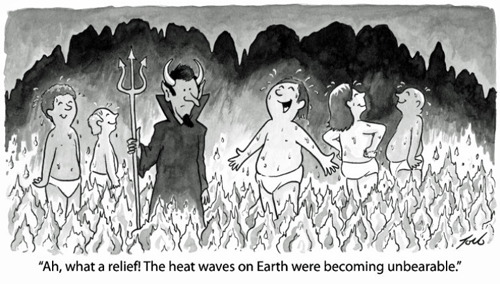
![]() If you think it was too hot and wildfire smoke polluted in 2023, just wait.
If you think it was too hot and wildfire smoke polluted in 2023, just wait.![]()
More than a decade ago, natural gas companies offered Southern Tier residents up to $3,000 per acre for leases that would allow for high-volume fracking on their property. The state ban left many landowners and gas companies frustrated.
STS’s $10 leases represent a more cautious approach that is based on the concept of capturing and storing CO2, the main driver of man-made climate change. ![]() But, the CO2 does not stay put, just like frac fluids and frac’d gases.
But, the CO2 does not stay put, just like frac fluids and frac’d gases.![]()
“The (methane) gas-bearing shale reservoirs have the storage capacity, in the form of untapped pore space, to sequester all the carbon dioxide required for the state to achieve its targeted goals (under CLCPA) in atmospheric carbon reductions,” the STS website says.
Efforts to achieve carbon capture and storage at the enormous scale required to avert catastrophic global warming have been plagued by dead end pilot programs and cost overruns.
But one widely-quoted 2019 study by Chinese scientists concluded that “CO2 fracturing has promising potential to neutralize the cost of CO2 capture.”![]() In the frac industry, promises are lies. Period.
In the frac industry, promises are lies. Period.![]()
That peer-reviewed study published in the journal Joule stated: “We further report our observations of field tests that a 2.5 times higher stimulated reserve volume was achieved by CO2 fracturing as compared to water fracturing…”
The study dismissed the process of fracking with millions of gallons of water as “cost ineffective and environmentally risky.”![]() Gas fracs are much more dangerous though, notably supercritical CO2
Gas fracs are much more dangerous though, notably supercritical CO2![]()
STS proposes to use as a substitute for water “supercritical” CO2 (carbon dioxide at temperatures where it has the density of a liquid but flows easily like a gas).
A British professor wrote that the Joule study provided “an important piece of the jigsaw puzzle about whether CO2 can be a viable alternative” to water as a fracturing fluid.
Geoffrey Maitland, professor of Energy Engineering at Imperial College in London wrote:
“In fact, CO2 sticks to shale rock more effectively than the in situ methane gas, so the combination of fracturing to remove methane from exposed rock surface with CO2 wanting to displace the methane and sit on the surface itself, give the potential for much enhanced production of methane gas from shales whilst at the same time storing much of the injected CO2 on the large area of shale surfaces created by the fracturing process – combining CO2 fracturing and storage alongside enhanced methane production.”![]() Prof Maitland needs to have a few honest chats with AER, if it’s possible for them to be honest. CO2 injected in Alberta is not staying put, it’s migrating kilometres!
Prof Maitland needs to have a few honest chats with AER, if it’s possible for them to be honest. CO2 injected in Alberta is not staying put, it’s migrating kilometres!![]()
But Steingraber, a key voice in the push for New York’s fracking ban, argues against carbon capture and storage (CCS) in general, whether or not it is associated with the extraction of methane from shale formations.
“In sum,” Steingraber wrote in a fracking compendium released last month, “CCS functions as a fossil fuel subsidy, entrenches fossil fuel demand, impedes the phase-out of fracking, requires massive public investment, captures far less carbon dioxide than claimed, and suffers from incomplete emissions accounting. It also harms the environment and further endangers public health through its emissions of conventional pollutants and need for massive buildout of pipelines.” (Her section on carbon capture and storage is on pages 88-94 of the compendium.)
Streingraber concludes that CSS “enables fracking” and is an expensive, dangerous diversion away from renewable energy investments.
Critics of the use of supercritical CO2 as a fracking fluid also question whether CO2 stored in shale formations will stay put indefinitely. It may tend to leak out over time.![]() Had the greedy energy industry not drilled so many leaking wells all over, including in New York, CCS might have been an experiment worth trying. Every energy well eventually leaks. Leaking CO2 can kill
Had the greedy energy industry not drilled so many leaking wells all over, including in New York, CCS might have been an experiment worth trying. Every energy well eventually leaks. Leaking CO2 can kill![]()
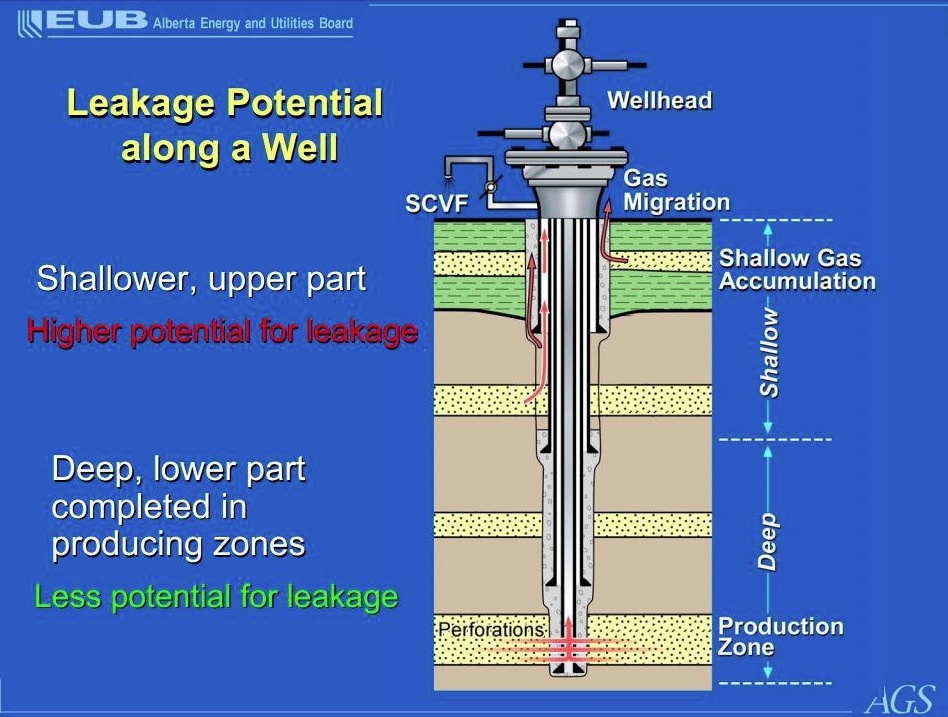
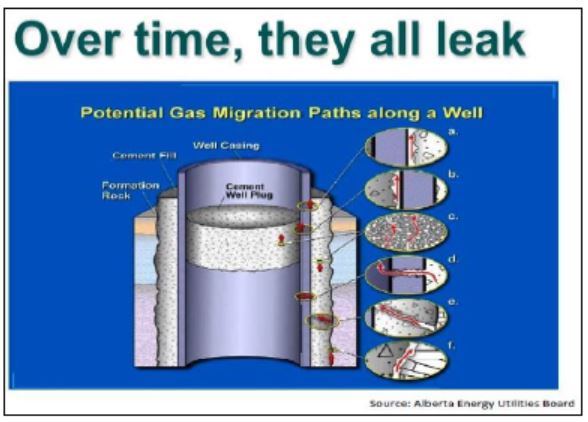
They also note that earthquakes have been attributed to gas drilling projects that relied on the fluid form of CO2.
And an extensive buildout of CO2 pipelines across the Southern Tier, as proposed, would carry its own set of new risks.
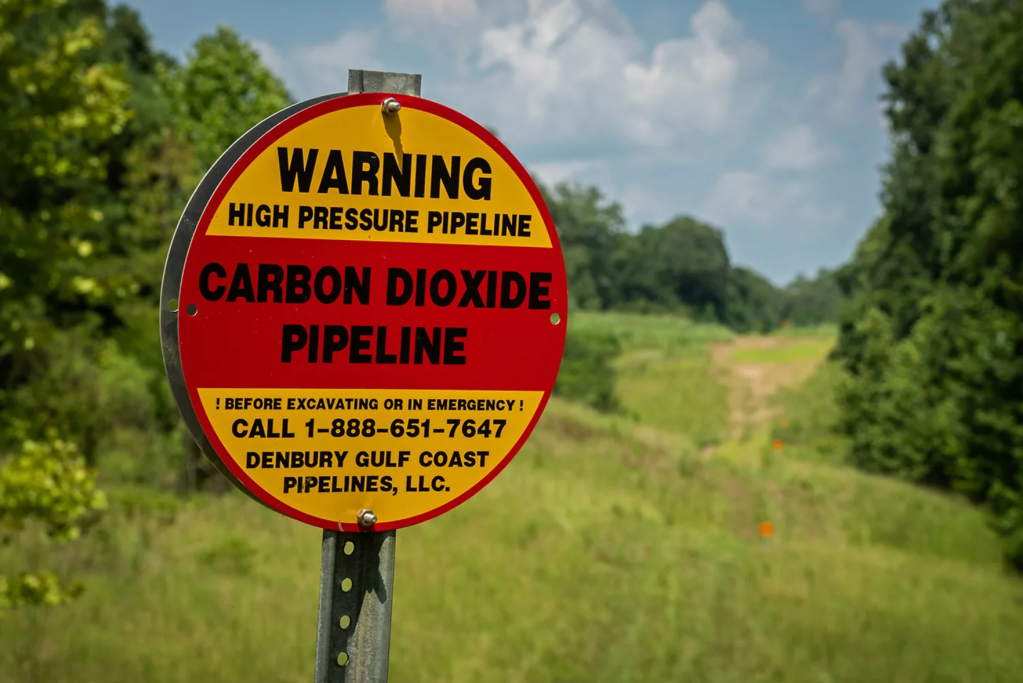
NPR has reported that the U.S. has about 5,000 miles of CO2 pipelines, a number that could soon grow to 65,000 miles. Eventually they could even rival the 2.3 million miles of existing petroleum pipelines if the current push toward more carbon capture and storage continues.
Companies like ExxonMobil and Chevron and their congressional allies including Sen. Joe Manchin pushed for the higher tax credits for CO2 storage included in last year’s federal climate legislation. (Those credits are a key part of STS’ financial projections.)
But CO2 pipelines can be quite dangerous. When one ruptured in Satartia, MS, in 2020, more than 200 people had to be evacuated and 45 others were hospitalized.
Too much carbon dioxide makes it harder to breathe. Mild exposures can cause coughing, dizziness and a feeling of “air hunger.” Larger doses can lead to unconsciousness, coma and death.
Combustion engines also need oxygen, and in Satartia, several vehicles stopped running. Clouds of CO2 hung in the air for hours.
Drawing on an original investigation by the Huffington Post, NPR reported: “Cars stopped working, hobbling emergency response. People lay on the ground, shaking and unable to breathe. First responders didn’t know what was going on.”
ILLINOIS:
Dr. Sandra Steingraber @ssteingraber1:
Oh look another CO2 pipeline plan is yanked after “overwhelmingly negative feedback from the public revolving around safety concerns.”
Wolf Carbon Solutions requests to withdraw current application to build CO2 pipeline that would run through Central IL
CO2 is a dangerous asphyxiant that turns into carbonic acid when it contacts water meaning it will corrode pipes, dissolve your lungs, and damage your organs.
This pipeline would run next to my hometown so yay for the unrelenting public pressure that stopped it.
Here’s the docket: https://www.icc.illinois.gov/docket/P2023-0475/documents/344431
Sarafox@WinkowitschSara:
Plus all the taxpayer subsidy $$$ going towards these projects that enrich$$$ a few private investors that reap all the profits. There’s NO benefit to the community.![]() And landowners carry all the liabilities and risks for puny rents in USA (in Canada, they get dick), while oil, gas and frac suck away our tax dollars using guise of clean energy and mitigating their pollution, suing CCS/carbon storage as con to keep producing more and more fossil fuels, pumping more and more CO2 into the atmosphere, and their carbon sequestration projects/infrastructure and wells will leak like hell.
And landowners carry all the liabilities and risks for puny rents in USA (in Canada, they get dick), while oil, gas and frac suck away our tax dollars using guise of clean energy and mitigating their pollution, suing CCS/carbon storage as con to keep producing more and more fossil fuels, pumping more and more CO2 into the atmosphere, and their carbon sequestration projects/infrastructure and wells will leak like hell.![]()
OHIO: Carbon storage landmen expected to visit county residents by Thomas Clapper, Oct 24, 2023, The Carroll County Messenger
Commissioner Robert Wirkner reported at the Oct. 19 commissioners meeting he met with representatives from Tenaska, Inc. to discuss carbon storage in the county.
“Mandated CO2 compliance regulations are about to be implemented and they will require CO2 to be recaptured when used,” said Wirkner. “This will affect the commissioners and landowners. Emitters of CO2 will be forced to properly mitigate the CO2.”
Wirkner said a big emitter for Carroll County is the power plant. Tenaska’s proposal to mitigate CO2 once captured is to store it underground. Storage will be handled like pooled units for oil wells.
“A well is drilled but instead of taking a product out, the CO2 is put in,” Wirkner said.
The pool unit is expected to be 10,000 to 15,000 acres. Landmen should begin contacting property owners soon. Wirkner said the CO2 is transported by pipeline![]() which guarantees lots of leakage defeating the purpose, some of it deadly; CO2 settles in low spots, and kills everything that crosses its path – which of course industry land agents will never disclose to those most at risk, like the landowners conned and or forced into accepting this industry poison
which guarantees lots of leakage defeating the purpose, some of it deadly; CO2 settles in low spots, and kills everything that crosses its path – which of course industry land agents will never disclose to those most at risk, like the landowners conned and or forced into accepting this industry poison![]() , not by truck so there shouldn’t be additional traffic. Commissioner Wirkner advised that as long as a pooled unit has CO2 stored, landowners in the unit will receive an annual payment.
, not by truck so there shouldn’t be additional traffic. Commissioner Wirkner advised that as long as a pooled unit has CO2 stored, landowners in the unit will receive an annual payment.
“If somebody knocks on your door regarding carbon sequestering this is what it is about,” said Wirkner.
Tenaska representatives made a presentation to the Carroll County Community Improvement Corporation (CIC) in September 2022. At that time, the company was looking to drill test wells in the area to determine if the geographic makeup of the soil was suitable.
During that session, Monte Ten Kley, project manager, explained ![]() lied about
lied about![]() the process.
the process.
“Industrial processes emit CO2, which is considered a greenhouse gas. The idea is to capture it and inject it into the ground for storage. Over a period of years, the carbon becomes part of the rock structure. Many industries which utilize CO2 in their manufacturing process consider injection wells as a tool and are looking to build facilities in the area where injection wells are located,” he said.
He noted there is a market to sell C02 and the pressure it is injected at is very low, so there is little danger of earthquakes.![]() !!!!!!!!
!!!!!!!!![]()

He also noted wells can be above or below the shale layer in which oil and gas are located and injection does not affect the layers like fracking does.![]() !!!!!!!!!!!! CO2 is injected to frac in many frac fields and or used to foam frac fluids.
!!!!!!!!!!!! CO2 is injected to frac in many frac fields and or used to foam frac fluids.![]()
![]()
Refer also to:
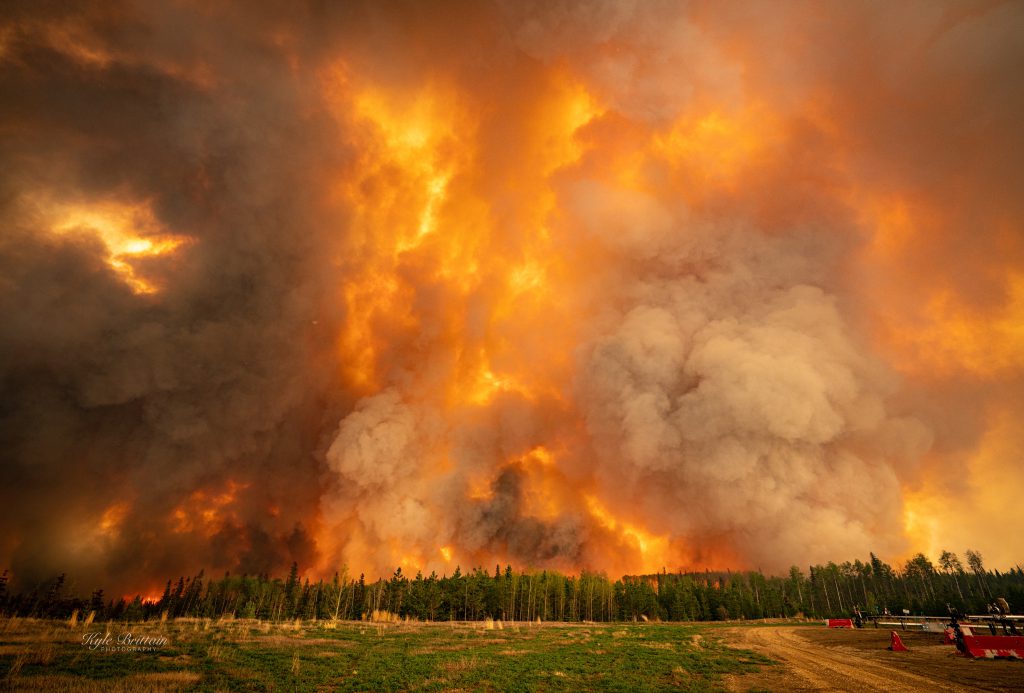
Photo by Kyle Brittain: 2023 Fox Creek (Frac central in Alberta) Wildfire
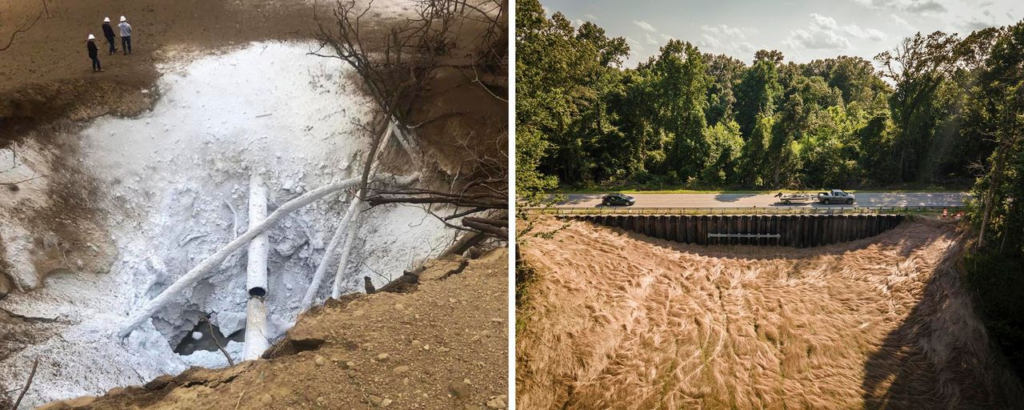
LEFT: The CO2 pipeline rupture. RIGHT: Vehicles pass over the pipeline explosion site in Satartia in July. Yazoo County Emergency Management Agency/Rory Doyle for HuffPost
2018 US Geological Survey: Induced Seismicity Associated with Carbon Dioxide Geologic Storage
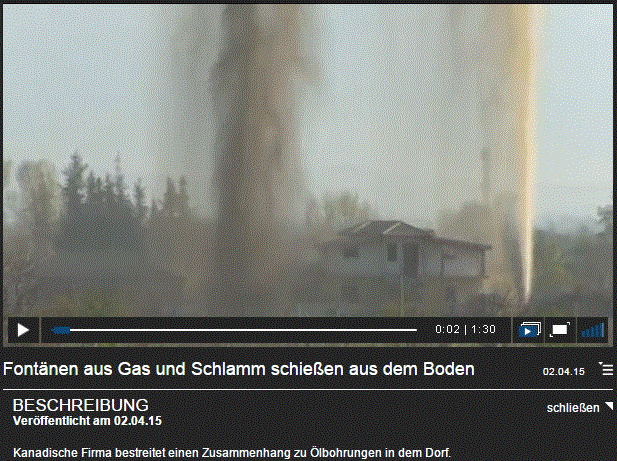

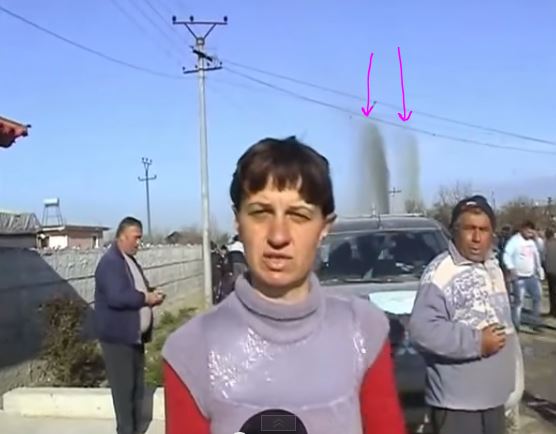
![]() How many of the residents of Marinza had their brains damaged by Banker Petroleum’s erupting volcanoes of injected CO2 that refused to stay put?
How many of the residents of Marinza had their brains damaged by Banker Petroleum’s erupting volcanoes of injected CO2 that refused to stay put?![]()
2012: CO2 in Stream, Dead Ducks Prompt Wyo. DEQ Citation against Anadarko
2012: Peer reviewed PNAS paper: Earthquake triggering and large-scale geologic storage of carbon dioxide
Despite its enormous cost, large-scale carbon capture and storage (CCS) is considered a viable strategy for significantly reducing CO2 emissions associated with coal-based electrical power generation and other industrial sources of CO2. … We argue here that there is a high probability that earthquakes will be triggered by injection of large volumes of CO2 into the brittle rocks commonly found in continental interiors. Because even small- to moderate-sized earthquakes threaten the seal integrity of CO2 repositories, in this context, large-scale CCS is a risky, and likely unsuccessful, strategy for significantly reducing greenhouse gas emissions
2011:

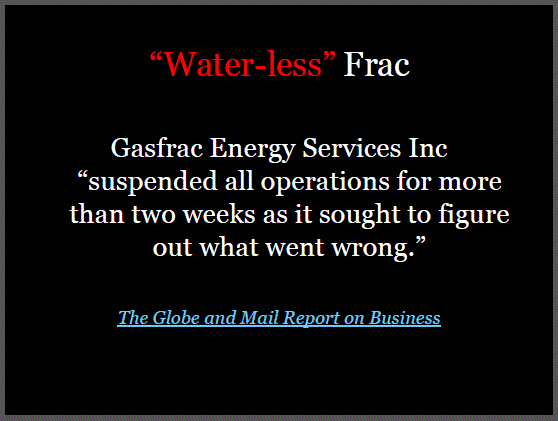
2008: Bachu, S., Buschkuehle, B.E., Haug, K. and Michael, K. (2008): Subsurface characterization of the Edmonton-area acid-gas injection operations; Energy Resources Conservation Board, ERCB![]() Now AER
Now AER![]() /AGS Special Report 92, 134 p.
/AGS Special Report 92, 134 p.
… From Page 88:
Figure 59 shows the extent of the Acheson original Blairmore T and subsequent St. Albert-Big Lake Ostracod A pools, and of the Strathfield (undefined) gas reservoir in the context of lithofacies changes in the Lower Mannville Basal Quartz and Ellerslie formations. When approval was granted for acid gas injection at Acheson, the regulatory agency required the operator to file annually with EUB and each other operator in the Acheson Blairmore T and St. Albert-Big Lake Ostracod A pools progress reports that “shall include the impact of acid gas injection on the performance of offsetting producing wells”. In March 2004 the operator at Acheson reported that CO2 was detected in 2003 in well 10-22-53-26W4 in the St. Albert-Big Lake Ostracod A pool, located at 3,625 m north from the acid-gas injection well. No H2S has been detected in the produced gas. Since at Acheson the average composition of the acid gas is 87% CO2 and 11% H2S (Table 14), with H2S being denser and more viscous than CO2, it is expected that CO2 would show first at a producing well. In addition, diagenetic processes within the reservoir could have reduced the H2S concentration in the injected acid gas as a result of pyrite precipitation, if an iron source was available. The issue was brought to EUB’s attention and was heading to a hearing, but the operator at Acheson has indicated to the regulatory agency that it has initiated an Appropriate Dispute Resolution process with the operator of the offset producing well to address the issue of CO2 breakthrough, and that this situation “will be addressed pursuant to the terms of the Mediated Settlement Agreement”.![]() To gag the harmed?
To gag the harmed?![]()
This case shows that, after 13 years of injection, CO2 has migrated northward a distance of [nearly 4 km] mostly under the combined drive of injection and production. The drive into the St. Albert-Big Lake Ostracod A gas pool has increased lately with the large spike in gas production from this pool (Figure 57b). There are five producing wells much closer to the acid-gas injection well (Figure 59) that did not report CO2 breakthrough, but these wells are owned by the same operator that operated until recently the Acheson acid-gas injection site. If acid gas broke through at any of these wells, it is most likely that the operator just stripped the acid gas from the sour reservoir gas and re-injected it, as the produced gas in this area is sour to begin with. Understanding the migration path and fate of the injected acid gas at Acheson requires a separate study that is beyond the scope of this report. …
2007: Presentation on above 2006 paper Factors Affecting or Indicating Potential Wellbore Leakage by Watson and Bachu at the Alberta regulator, AER (when it was EUB), no less!
2006 May: The Role of the Upper Geosphere in Mitigating CO2 Surface Releases in Wellbore Leakage Scenarios
2006 June: Possible indicators for CO 2 leakage along wells by Bachu and Watson, 8th International Conference on Greenhouse Gas Control Technologies, Trondheim, Norway
… Storage safety refers to the potential harm to other resources, equity and life that a CO2 leak may entail.
The probability and effects of leakage from CO2 storage sites need assessment by both the operator and regulatory agency during the application and permitting process, during the operational phase and after site abandonment [3]. Any fluid in the subsurface, especially a buoyant one like CO2 , will migrate laterally within the injection unit and may leak upwards across formations through faults and fractures and/or defective wells [1, 4]. The potential for CO2 leakage through fractures and faults can be well managed through proper geological characterization and selection of the storage site, and through proper operating procedures. Managing the potential for CO2 leakage through wells is more difficult. Exploration and production wells have been drilled, completed and abandoned since the middle of the 19th century, with variable technology and materials, and with no or under variable regulatory regimes. Well materials (cements, steel, elastomers, etc.) will or may degrade over time, particularly in the presence of corrosive agents such as saline formation water and CO2 [5, 6]. Thus, the potential for leakage through existing wells needs to be assessed for site selection and remediation. New wells will also be subjected to the same in-situ conditions as the existing wells.![]() Dr Tony Ingraffea subsequently found new wells to be worse leakers than older ones, which makes sense given the oil and gas industry’s relentless greed, lies, and demanding degegulation which has been consistently granted by our deregulators, notably Alberta’s “No Duty of Care” legally immune bullying shameless AER.
Dr Tony Ingraffea subsequently found new wells to be worse leakers than older ones, which makes sense given the oil and gas industry’s relentless greed, lies, and demanding degegulation which has been consistently granted by our deregulators, notably Alberta’s “No Duty of Care” legally immune bullying shameless AER.![]() …
…
